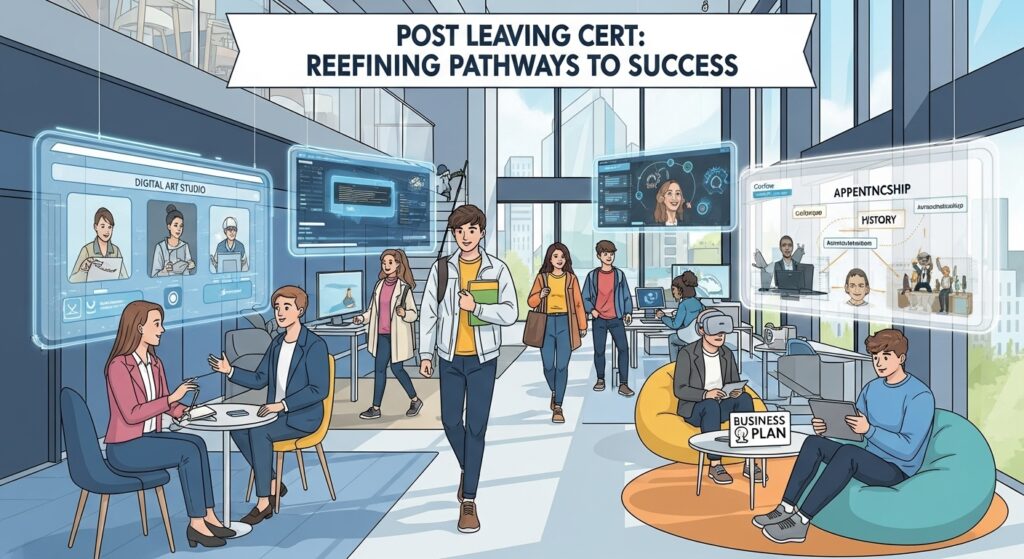In today’s rapidly changing educational landscape, success is no longer defined solely by university degrees or traditional academic routes. Increasingly, students and employers alike are recognizing the value of practical, skill-based learning that bridges the gap between education and employment. At the heart of this evolution lies the Post Leaving Cert (PLC) program—an essential pathway empowering learners to gain relevant skills, explore new opportunities, and shape meaningful careers in a dynamic world.
This article explores the rising importance of Post Leaving Cert programs, their impact on students and industries, and how they represent a new model for learning, growth, and employability.
What Is a Post Leaving Cert (PLC) Course?
A Post Leaving Cert course is a vocational program designed for students who have completed their Leaving Certificate or equivalent secondary education. These programs offer an alternative to university study, focusing on developing practical and professional skills that prepare learners for direct entry into the workforce or for progression to higher education.
Typically lasting one to two years, PLC courses combine classroom instruction, hands-on training, and work placements. They cover a wide range of disciplines—from business and healthcare to information technology, design, media, and social care—ensuring that students can align their studies with real-world needs and personal interests.
The flexibility and relevance of PLC programs make them an increasingly popular choice among students who prefer applied learning over purely academic pathways.
The Evolving Role of PLC in Modern Education
The traditional model of education often followed a linear route: secondary school, university, and then a career. But today, that pattern no longer fits everyone. Economic shifts, technological advancements, and evolving job markets demand agility, adaptability, and continuous learning.
Post Leaving Cert courses have emerged as a vital bridge—connecting theoretical education with the practical skills employers demand. They cater to a diverse range of learners:
-
Recent school leavers seeking to explore different fields before committing to a degree.
-
Mature students looking to retrain or re-enter the workforce.
-
Professionals aiming to upgrade or diversify their skills in response to changing industries.
In this way, PLC programs embody inclusivity, accessibility, and lifelong learning—values central to the future of education.
A Learning Philosophy Rooted in Experience
At the core of the Post Leaving Cert system is a belief that learning should be dynamic, experiential, and deeply connected to the real world. The philosophy emphasizes:
-
Applied knowledge: Students engage in projects, internships, and workshops that simulate professional environments.
-
Personal development: PLC programs help learners build confidence, communication, and teamwork skills alongside technical expertise.
-
Career readiness: Graduates emerge with practical portfolios and real-world experience, positioning them strongly for employment or further study.
This learner-centered approach ensures that education remains relevant and impactful—not just theoretical.
Bridging Education and Employment
One of the most compelling strengths of Post Leaving Cert programs is their ability to connect education directly with industry needs. As global economies evolve, employers increasingly value candidates with tangible skills, adaptability, and problem-solving abilities.
PLC programs respond to this by embedding work experience as a central component. Students gain insights into industry operations, network with professionals, and often secure employment directly through placements.
For instance:
-
Business PLC graduates often transition into marketing, finance, or management assistant roles.
-
Healthcare PLC students find employment in hospitals, clinics, or care facilities.
-
Technology-focused PLC courses equip learners for roles in software support, digital media, or technical operations.
This seamless integration of study and work not only enhances employability but also instills a sense of purpose and direction in learners.
The Digital Transformation of PLC Programs
As education embraces digital transformation, Post Leaving Cert courses are evolving to include technology-driven learning models. Online resources, hybrid classes, and digital collaboration tools have expanded access to PLC programs and made them more adaptable to modern life.
These innovations empower students to:
-
Learn flexibly while balancing work or family commitments.
-
Access global learning resources and industry networks.
-
Develop digital literacy—an essential skill for nearly every career path.
In particular, sectors like cybersecurity, digital marketing, and data analytics have seen a surge in PLC enrollment, reflecting the demand for tech-savvy graduates who can navigate the digital economy with confidence.
A Model for the Next Generation of Learners
The rise of the Post Leaving Cert model reflects a broader shift in what students and societies value in education. For many, it represents freedom—the freedom to explore, to learn practically, and to define success on their own terms.
Younger generations, especially Millennials and Gen Z, increasingly seek education that is:
-
Flexible: Allowing multiple routes to success.
-
Purpose-driven: Linked to personal interests and societal needs.
-
Impactful: Preparing learners for real contributions, not just credentials.
PLC programs capture all these qualities, empowering learners to become both job-ready and socially conscious citizens.
Challenges and Opportunities Ahead
Like all systems, the Post Leaving Cert pathway faces its share of challenges. These include ensuring consistent quality standards, expanding awareness among employers, and maintaining funding for program development.
However, these challenges also create opportunities for innovation. Educational institutions, policymakers, and industry leaders can work together to:
-
Strengthen collaboration between PLC colleges and employers.
-
Enhance pathways for PLC graduates into universities and apprenticeships.
-
Invest in new technologies and curriculum design that reflect emerging career trends.
By addressing these areas, the PLC system can continue to evolve as a powerful engine for social mobility, economic resilience, and lifelong learning.
Looking Ahead
The future of education lies in diversity of choice—and the Post Leaving Cert program stands as a testament to that. It acknowledges that not every learner follows the same path and that success can come from multiple directions.
As industries evolve and societies demand more adaptable, empathetic, and skilled individuals, PLC programs will remain central to shaping the workforce of tomorrow.
Whether for a student exploring their passion, an adult reskilling for new opportunities, or a society striving for inclusive growth, Post Leaving Cert education is more than a stepping stone—it is a foundation for lifelong achievement.







